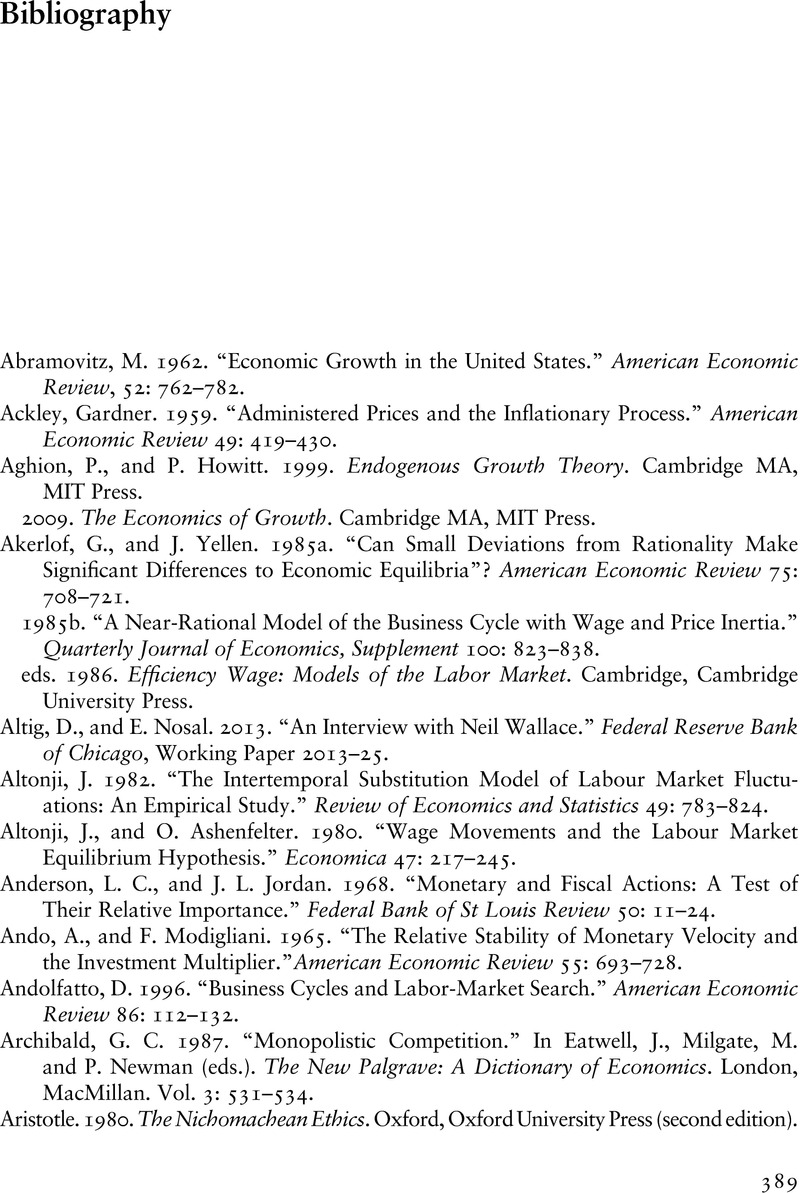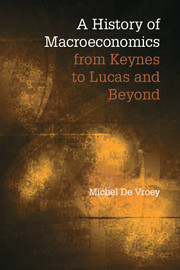Book contents
- A History of Macroeconomics from Keynes to Lucas and Beyond
- A History of Macroeconomics from Keynes to Lucas and Beyond
- Copyright page
- Dedication
- Contents
- Figures
- Tables
- Boxes
- Preface
- Acknowledgements
- Part I Keynes and Keynesian Macroeconomics
- Part II DSGE Macroeconomics
- Part III A Broader Perspective
- Bibliography
- Index
- References
Bibliography
Published online by Cambridge University Press: 18 December 2015
- A History of Macroeconomics from Keynes to Lucas and Beyond
- A History of Macroeconomics from Keynes to Lucas and Beyond
- Copyright page
- Dedication
- Contents
- Figures
- Tables
- Boxes
- Preface
- Acknowledgements
- Part I Keynes and Keynesian Macroeconomics
- Part II DSGE Macroeconomics
- Part III A Broader Perspective
- Bibliography
- Index
- References
Summary

- Type
- Chapter
- Information
- A History of Macroeconomics from Keynes to Lucas and Beyond , pp. 389 - 419Publisher: Cambridge University PressPrint publication year: 2016



